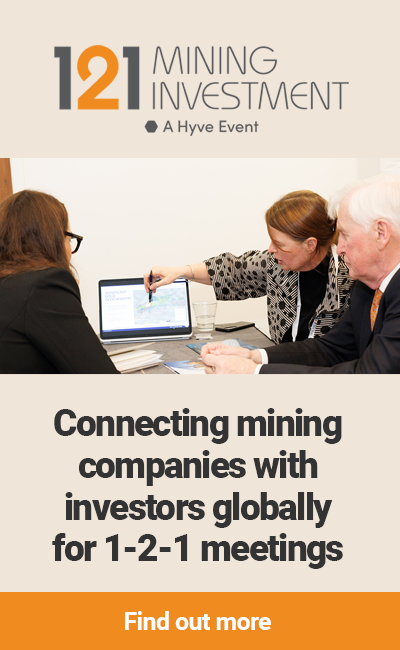The world is rapidly moving towards decarbonization, and nickel and cobalt explorers and producers are central to that process. What is the golden opportunity for Giga Metals Corporation (TSXV: GIGA) over the coming years?
Our opportunity is to be a large supplier of battery-grade nickel for the North American and European gigafactory markets. The electric vehicle business is becoming hyper competitive, with manufacturers looking to source nickel responsibly and with a very low carbon footprint. Security of supply is critical, so geopolitical risk is a consideration in selecting long term suppliers. Battery and EV makers also want to increase efficiency and reduce costs by reducing processing steps between ore in the ground and cathode materials in the batteries and by reducing transport costs. Due to the nature, scale, and location of our deposit, we can address both ESG issues and geopolitical issues with North American sourcing.
Your Turnagain Project in British Columbia, Canada, has huge potential to supply nickel and cobalt to the global battery industry. What are some of the key features and advantages of the project?
The processing flowsheet is simple, reliable and capable of creating premium grade products for the cathode supply chain. Our deposit hosts nickel and cobalt in one mineral in a bulk open-pit mineable resource, so ore recovery is straightforward and processing only has to focus on recovering one mineral. Many nickel deposits host multiple pay minerals, which complicate the processing.
By focusing on chemical forms of nickel and cobalt that feed into the battery supply chain, we aim to be part of the trend to remove inefficiencies in that processing. And our location in North America means our transport costs to North American gigafactories will be competitive.
The Turnagain Project has low carbon intensity and has real potential to become a carbon neutral mine. We continue to fund research at the University of British Columbia into the ability of our silicate tailings to passively sequester CO2 from the atmosphere. The silicate minerals convert to carbonate minerals and the CO2 is locked away permanently.
The work is ongoing, but we already have empirical data that supports our goal to be carbon neutral. Will this matter? Yes, for two reasons. One is that if we can quantify and certify the CO2 sequestration, the carbon credits can provide a salable byproduct for the project. Second, we think that a lot of buyers of electric vehicles will care about the environmental impacts of the materials in their cars. Buyers care today, but they have little information and choice to guide their purchasing decisions, like buying appliances before eco-labels became the norm, or food before nutrition labels.
With geopolitical factors forcing countries like the U.S. to establish independent supply chains for battery metals and other critical minerals, what role do you see Giga Metals playing in helping establish independent supply chains in North America and further afield?
For North American and European battery makers, the supply chain security of having a large source of nickel and cobalt located in Canada will be critical. Canada is a rule-of-law jurisdiction with high environmental and social standards. It takes longer to develop than a large project than in the developing world, but once it is built, you can be satisfied that your source of metals meets the highest ethical standards, that you’re not contributing to corruption of public officials, and that the government won’t steal your project.
For Western battery makers, I think they are facing an existential issue if they do not secure long-term supplies of critical battery metals such as nickel and cobalt. The Chinese have already secured their supply by building mines and, if Western companies don’t do something similar, they may not survive the Chinese competition. I literally think some of the big Western battery companies will no longer exist ten years from now.
What differentiates Giga Metals’ cobalt production from other producers?
The biggest concern around cobalt is ethical sourcing – some of the cobalt produced out of Central Africa has been linked to issues like child labour, conflict minerals, and dangerous working conditions. Much like with blood diamonds, the purchasers of EVs are globally-minded people who want to avoid harming the world with their consumption choices.
Giga Metals cobalt will be produced with the nickel from a large modern mine with effective regulations, and will be free of these concerns. No matter how good the supply-chain tracing of minerals from difficult areas is, questions always remain around provenance.
In our project, the cobalt and nickel are both part of the pentlandite mineral and are recovered together. The cobalt will be a byproduct of the nickel production and will be subject to Canadian environmental and labour regulations.
What is the difference between sulphide nickel deposits and laterite deposits in terms of carbon intensity to produce battery grade nickel?
Sulphide projects such as Turnagain have lower carbon intensity than laterite deposits by their very nature.
Laterite projects come in two forms. Processing through smelting to ferronickel or its lower-grade cousin nickel pig iron is typically the most carbon-intensive form of nickel production as the power is often sourced from coal, and large quantities of coal or coke are added to the smelter for the process. Many of these facilities have a carbon footprint in the range of 50 tonnes of CO2-equivalent per tonne of nickel (t CO2e/t Ni), and that is only to the impure form that cannot be used in batteries.
Ferronickel has been converted to matte for further refining to high-purity nickel in the past, but this is not currently done anywhere. There is a proposal to do this again, starting with the lower grade nickel pig iron, but it has not been commercialized yet. If it is, it will still suffer the carbon footprint of its feedstock, nickel pig iron, and tack on the additional footprint of the matte conversion and refining stages.
Processing laterite ore through High Pressure, High Temperature Acid Leach (HPAL) to produce class one nickel typically results in carbon intensities over 20 t CO2e/t Ni.
Sulphide deposits, such as Turnagain, have three primary advantages. First, the ore can be easily concentrated at the minesite into an easily shipped intermediate, which can be transported with a low carbon footprint and refined in efficient centralized facilities, instead of building smelters at every deposit. Secondly, the sulphur in the ore is a fuel that supplies much of the energy used in the smelting process, and for most locations, produces byproduct sulphuric acid which is used to make fertilizers or in other chemical processes. Lastly, the centralized smelting and refining locations are often in locations with low-carbon electricity, such as Ontario and Norway. Overall, many sulphide nickel projects have a total carbon footprint less than 10 t CO2e/t Ni produced.
Turnagain builds on these advantages by utilizing green hydroelectricity at the mine site rather than fossil-power such as is done in many remote mines. With the clean BC power, our carbon intensity for operating the mine and mill with a diesel mining fleet yields a carbon intensity of just 2.24 t CO2e/t Ni to make nickel concentrate, which can then be smelted and refined. That further treatment comes with an additional carbon footprint that depends on the smelter and refinery type and location, but is in the range of 3-10 t CO2e/t Ni.
If we use an electric mining fleet, the footprint would drop to 0.7 t CO2e/t Ni for the mine and mill, and if we factor in the carbon sequestration potential of our tailings material, we might well be able to reduce Scope 1 and 2 emissions to zero.
What are some of the ESG practices that you have enacted in your operations – particularly with regard to tailings management?
To be clear, we are a development company today without mining operations, so our focus is on responsible exploration and development activities. In this area we have worked with our local Indigenous communities to ensure that we maintain good relations, and have led a process to reduce the impact of transportation into our general project area. The uncontrolled access in past years has been a significant issue for our communities, so we were pleased to take the lead on developing a new regulated approach.
Our tailings management facility is designed to world-class safety standards. Our design uses more expensive centre-line construction (where the dam is built vertically) rather than the upstream construction (where the dam is built on top of tailings materials) which has been found to be a causal issue in some of the recent tailings failures globally. We are not planning to construct our tailings facility out of the tailings themselves, which has been done as a cost saving measure in many facilities.
As the natural reaction of the tailings minerals with CO2 to lock up the greenhouse gas in new minerals requires a large exposed area, we are planning to spread our ground silicate rock tailings across our planned footprint from the outset, creating large shallow beaches which will maximize the absorption of CO2 from the atmosphere into the tailings. As the CO2 is absorbed from the atmosphere and locked up, the new minerals help cement the ground rock particles together, which ultimately reduces the risk posed by the tailings facility.
For more information about Giga Metals Corporation, please visit https://gigametals.com/












